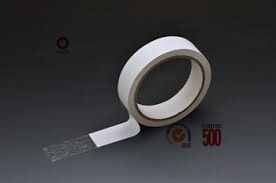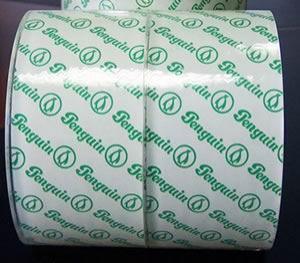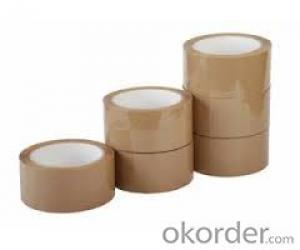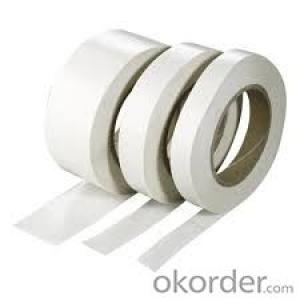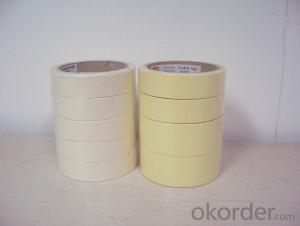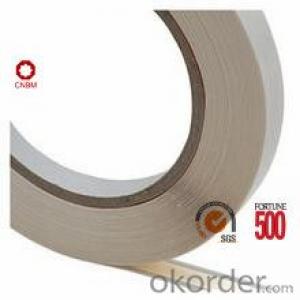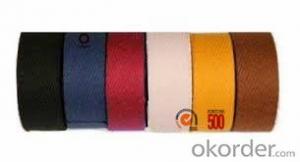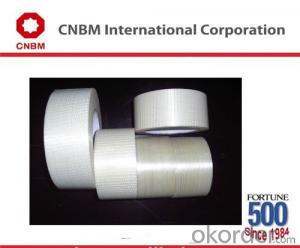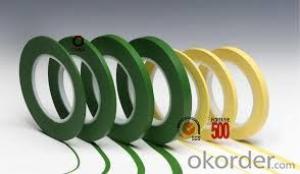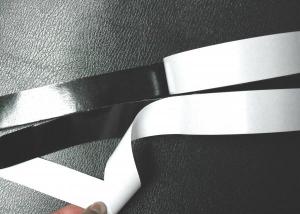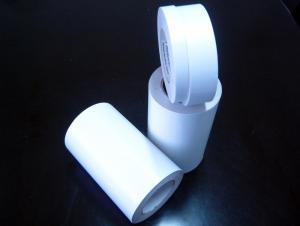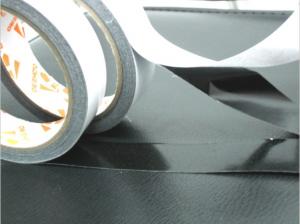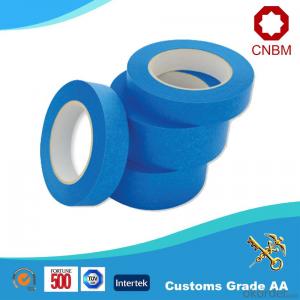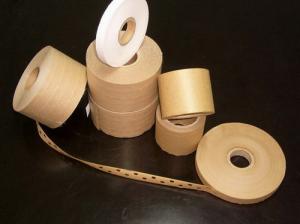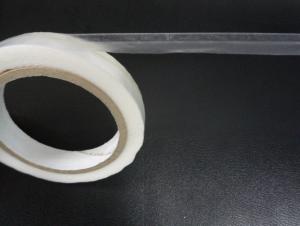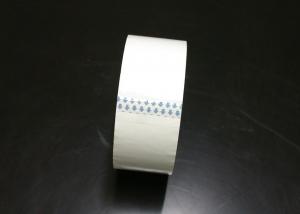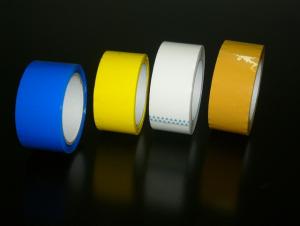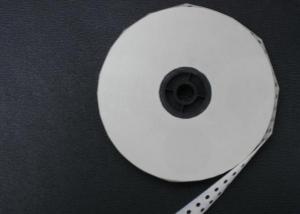Secure Packaging Tape - Double Sided Tissue Tape DS1-80H Bonding and Fixing Tape
- Loading Port:
- Shanghai
- Payment Terms:
- TT OR LC
- Min Order Qty:
- 10000 m²
- Supply Capability:
- 20000000 m²/month
OKorder Service Pledge
OKorder Financial Service
You Might Also Like
Description
The Double Sided Tissue Tape is of tissue as the carrier, coating with hot melt adhesive, water based acrylic, solvent based acrylic. It is excellent in flame retardant, high temperature stability, and anti-aging. It provides well insulation to various products.
Packaging Detail:
Log Roll: Length 1000mm; width: 1050mm, 1260mm, 1040mm..
Cut Roll: As per customer’s requirements
The thickness of the tape can be customized.
Main Features of the Double Sided Tissue Tape
| Item No. | Adhesive | Thickness (micron) | Initial Tack (14#mm) | Holding Power(hour) | Adhesive to steel (N/25mm) | Temperatureresistance (DC) |
| DS1-80H | solvent based acrylic | 80 | ≤120 | ≥10h | ≥7 | 60 |
General purpose of Double Sided Tissue Tape: widely used for bonding, fixing for leather, foam, sponge, garment, shoe, luggage, plastic, paper splicing and stationery.
Specifications
·World Top 500 Enterprises
·Resistance to cold, heat and aging
·Best quality and competitive price
·SGS&ISO9001

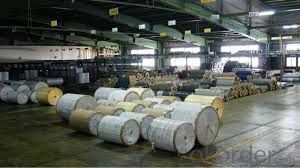
FAQ of Double Sided Tissue Tape
Q1. How about your company?
CNBM International Corporation (CNBM International) is a state-owned company and we have sound business relations with clients from over 120 countries. Currently, we have wholly-owned overseas subsidiaries and branches in 5 countries with a view to realize localization, which also represents an essential progress in our globalization target. We have over twenty years experiences.
Q2. What kind kind of service we can provide for you?
Sample of Double Sided Tissue Tape is available.
Your inquiry will be replied within 12 hours.
24 hours service
Well-trained & experienced sales representative are ready to answer you.
Q3. How long can you receive the product?
Within 7-15 working days after receiving your deposit
Welcome to contact us and visit the factory!
- Q: Does packaging tape come in different materials for specific applications?
- Yes, packaging tape does come in different materials for specific applications. These materials include polypropylene, PVC, paper, and filament tape. Each material has unique properties that make it suitable for various purposes such as sealing lightweight packages, securing heavy boxes, or providing extra strength and tear resistance.
- Q: How does packaging tape perform on high-friction surfaces?
- Packaging tape is designed to adhere to a wide variety of surfaces, including high-friction surfaces. Its performance on high-friction surfaces can vary depending on the specific tape and the nature of the surface. In general, packaging tape is equipped with strong adhesive properties that allow it to stick securely to surfaces, even those with high friction. The adhesive on the tape is formulated to provide excellent tackiness and bonding strength, ensuring that it stays in place and maintains its hold on high-friction surfaces. However, it is important to note that excessive friction or roughness on a surface can potentially affect the tape's adhesion. If the surface is extremely rough or uneven, it may create air pockets or gaps between the tape and the surface, which can compromise its performance. In such cases, it is advisable to prepare the surface properly by cleaning and smoothing it before applying the tape to ensure optimal adhesion. Additionally, the durability of the tape can play a role in its performance on high-friction surfaces. Some packaging tapes are reinforced with fibers or have a thicker construction, making them more resistant to wear and tear caused by friction. These tapes are often recommended for heavy-duty applications or when packaging items that will be subjected to constant rubbing or sliding on high-friction surfaces. Overall, packaging tape is generally well-suited for use on high-friction surfaces. Its adhesive properties, combined with proper surface preparation and selection of a suitable tape, can ensure reliable and long-lasting adhesion, even in challenging conditions.
- Q: Is packaging tape safe for use on delicate surfaces or materials?
- Packaging tape, in general, is not specifically designed for use on delicate surfaces or materials. While it may adhere well to most surfaces, it can potentially cause damage or leave residue on delicate materials such as paper, fabrics, or certain types of paint. To ensure the safety of delicate surfaces or materials, it is advisable to use specialized tapes designed explicitly for delicate applications. These tapes are often referred to as "delicate surface tapes" or "low-tack tapes." They are designed to have a gentle adhesive that can securely hold items together without causing any damage or leaving adhesive residue. Delicate surface tapes are commonly used in the arts and crafts industry, for delicate papers, scrapbooking, or as temporary adhesives for mounting artwork. They are also useful for securing lightweight or fragile items during shipping or packaging. Therefore, while packaging tape can be effective for general purposes, it is not recommended for use on delicate surfaces or materials. It is important to use the appropriate tape for the specific application to protect delicate surfaces and prevent any potential damage or residue.
- Q: Can packaging tape be used for sealing packages for shipping?
- Indeed, packaging tape serves the purpose of sealing packages intended for shipping. With its specialized design, packaging tape effectively secures packages, guaranteeing their integrity throughout the transit process. It establishes a robust and long-lasting connection that can withstand the challenges posed by shipping and handling. Whether you're dispatching small or large packages, packaging tape becomes a vital instrument to guarantee the proper sealing and safeguarding of your items as they embark on their journey.
- Q: Can packaging tape be used for sealing plastic garment bags?
- Indeed, plastic garment bags can be effectively sealed using packaging tape. The primary purpose of packaging tape is to create a reliable and long-lasting seal on diverse materials, such as plastic. By utilizing packaging tape, one can ensure that the plastic garment bag remains tightly sealed, thereby safeguarding the garments inside from dust, moisture, and other harmful substances. This, in turn, prevents any potential damage or dirtiness. Furthermore, packaging tape is typically user-friendly, as it can be effortlessly cut with a dispenser or a pair of scissors, which adds to its convenience when sealing plastic garment bags.
- Q: Can packaging tape be used for securing shipments during transit?
- Yes, packaging tape can definitely be used for securing shipments during transit. Packaging tape is specifically designed to provide a strong and reliable seal for packages, ensuring that they remain intact and protected during transportation. It is commonly used for sealing cardboard boxes, securing bubble wrap or other protective materials around items, and reinforcing the closure of packages. Packaging tape is durable, easy to use, and provides a secure bond, making it an ideal choice for securing shipments during transit.
- Q: Is packaging tape resistant to UV rays?
- Yes, packaging tape is generally resistant to UV rays. Most packaging tapes are made from materials like polypropylene or polyethylene, which have inherent resistance to UV radiation. This means that the tape can withstand exposure to sunlight and other sources of UV rays without deteriorating or losing its adhesive properties. However, it is important to note that prolonged exposure to UV rays can still cause some degradation over time. To ensure maximum longevity, it is recommended to store and use packaging tape in a cool, dry place away from direct sunlight whenever possible.
- Q: Can packaging tape be used for sealing construction or building materials?
- Yes, packaging tape can be used for sealing construction or building materials. While it may not be as durable or strong as specialized construction tapes, packaging tape can still provide a temporary or quick solution for sealing materials such as cardboard, plastic sheets, or lightweight panels. It can be used to secure temporary covers, attach protective layers, or hold materials in place during construction or renovation projects. However, for long-term or heavy-duty applications, it is recommended to use tapes specifically designed for construction purposes, as they are more resistant to weather, UV rays, and have stronger adhesive properties.
- Q: The tape is left on the door. The glue has dried for a long time. What chemicals can be used to remove it without damaging the paint?
- 3, buy a bottle of glue only 20 yuan, a lot of places can use. Also can use for a long time4, use strong adhesive tape to put some decorations on the door, and then remove, visible, the door left a piece of glue mark. Use gasoline or kerosene can erase the tape, buy 1200 water sandpaper to wipe water speckle trace, buy a pot of transparent varnish, banana oil to dilute, brush brush once a response to light. Do not use nail polish brush to wipe, can go to the gum stains, but the door will become a misty white spot.5. First scrape the sticky tape with a knife, then wipe it with petroleum essence. Then the frosted glass will be wiped off with the turpentine and then wipe with turpentine.
- Q: Can packaging tape be used for sealing plastic storage bags?
- Packaging tape has the capability to seal plastic storage bags, ensuring a tight seal that prevents the entry of air or moisture. This feature proves particularly advantageous when safeguarding items such as food, clothing, or other valuables from dirt, dust, or potential harm. Nevertheless, it is crucial to acknowledge that although packaging tape can provide a reasonably secure seal, specialized bag sealers or sealing clips designed explicitly for plastic bags may offer a more dependable seal.
Send your message to us
Secure Packaging Tape - Double Sided Tissue Tape DS1-80H Bonding and Fixing Tape
- Loading Port:
- Shanghai
- Payment Terms:
- TT OR LC
- Min Order Qty:
- 10000 m²
- Supply Capability:
- 20000000 m²/month
OKorder Service Pledge
OKorder Financial Service
Similar products
Hot products
Hot Searches
Related keywords





